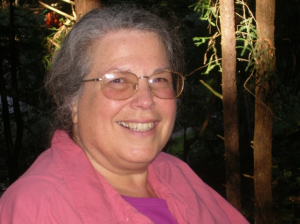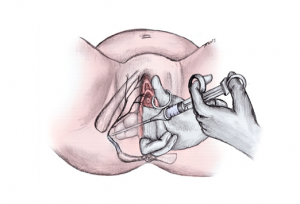The Idea that it was “illegal” for LMs to preceptor midwifery students
Late in the spring of 2004 I began to hear a ‘rumor’ that the midwifery program staff person, which at the time was Teri Kizer, was telling people that it was “illegal” for a licensed midwife to have a midwifery student. I dismissed it as nothing more than an unfounded rumor. Then I started to receive an occasional call from a student or LM in which they insisted they personally had been told by Teri Kizer that it was illegal for a midwife to have a student. I assured them this was a misunderstanding on the part of either the midwife or the Medical Board staff. I based this opinion on two things. First was my familiarity with the Medical Board itself and my attendance at all the Division of Licensing meetings. This idea was certainly not something that had ever been discussed by the DOL members.
Second was my familiarity with the LMPA, which does not contain any provision that could possibly be interpreted to make students “illegal”. In fact, more pages of the law address midwifery education than any other topic.
Equally important was the consumer safety function of the LMPA. Appropriate clinical training of students was vital to the educational process. Without opportunities to learn technical skills and most especially opportunities for students to develop clinical judgment; midwifery licensing would be a cruel joke. It would be foolish and oxymoronic for the Medical Board staff (of all people!) to make this interpretation. A principle in physics known as ‘Achem’s razor’ – the idea that the simplest or most straight forward explanation is also the most likely to be correct – brought me back to the conclusion that this was simply an error of some sort.
Then I received a call on a Friday afternoon in May 2004 from LM Constance Rock. She was clearly upset and recounted to me that she had just been visited by a special investigator for the Medical Board in regard to a complaint and was told that it was illegal for her to be working with a midwifery student. According to Constance, the investigator told her that if she was not able to establish by Monday that it was legal for midwives to have a student, then she would be served with a cease and desist order and her license would be immediately confiscated. And yes, I again insisted that this must be a mistake and told Constance to call Teri Kizer and work it out.
Sometime in the next few weeks I personally talked to Teri and was shocked when indeed she insisted that it was illegal for a licensed midwife to have a student. So I asked that Cindy James, the person in charge of the licensing division, call me. Eventually I had the chance to talk to Cindy who started out using the same phrase: “illegal to have a student”. I asked her to read me the exact words in the LMPA that brought her to that conclusion, which of course she couldn’t do. After a bit more wrangling, she corrected her statement to say that “some things that students did might be illegal”, thus the preceptor midwife would be guilty of aiding and abetting the unlicensed practice of midwifery. I asked again that she spell out in detail exactly what “things” the MBC defined as “illegal’. She didn’t have any specific answer and so we ended our conversation.
I followed up this phone call with a letter to Ms James (August 2004) asking the Licensing Division to identify exactly what statutory authority they based their assertion on and to provide a list of exactly what activities they considered to be ‘illegal’. In early September I talked to Liz Smith, the staff person in Senator Figuero’s office in charge of midwifery legislation and she reiterated the idea that it must be a misunderstanding. She offered to ask the Legislative Counsel for a legal opinion on the topic and I gladly accepted.

I finally received a reply to my August letter to the Medical Board in December 2004. The letter was sent to all LMs and formally notified them that the Board believed the LMPA to be fatally flawed in regard to the clinical training of midwifery students. Until a legislative remedy could be negotiated, it informed LMs that provision of any “clinical” midwifery care by a student was an unlicensed practice of midwifery and that preceptor LMs would be charged with aiding and abetting this illegal practice if we should permit any students to provide midwifery care.
In January 2005 Senator Figueroa’s office received the opinion of the Legislative Council which directly contradicted the opinion of the Medical Board. It stated, among other things, that clearly the LMPA intended for midwifery students to receive appropriate clinical training and that routine caregiver activities such as taking blood pressures and listening to fetal heart tones would be well within the intent of the law, and therefore, the licensed midwife could not be construed to be ‘aiding and abetting’.
Subsequent to all these events, Linda Whitney, legislative analyst for the MBC, spoke to me about efforts within the agency to correct the problem thru legislation. Legislation authoring the clinical provision of midwifery care by students matriculated in a Board-approved training program was passed later in the year. We all assumed it would bring this matter to a close.
Synopsis of MBC policies relative to this issue:
During the first eleven years of the LMPA –1993 to December 8, 2004 — the relationship between licensed professionals (including LMs and nurse-midwives) and students of midwifery were informal – that is to say, not defined by any official source or any formal policies or protocols. The LMPA was silent on the topic, there were no regulations establishing protocols and no published policies by the Medical Board. The Implementation Committee Meetings had not dealt with the topic, nor had any of the quarterly Board meetings.
During this decade-plus period of time the most contentious and provocative issue for the MBC was the continuing unavailability of physician supervision for LMs. The major focus of MBC relative to administrating the midwifery licensing program was a 3 1⁄2 year effort to promulgate new regulations (mandated by SB 1950), which required the adoption of a standard of care (formally approved on March 9th by the OAL ). The on-going need so far not addressed is the Midwifery Advisory Committee, so that continuity and institutional memory can provide a logical foundation for guidance to LMs. We all hope this will help to avoid issues such as this one.
Conclusions:
Direct-entry midwifery as an educational discipline, a practical application of historically valuable skills and a vital service to childbearing families, was inappropriately truncated for 44 years due to a ‘glitch’ in the law – the repeal of the legislative authority by the Board of Medical Examiners to process applications for midwifery licensure. It was the passage of SB 966 in 1949 that eventually resulted in the 1976 Bowland Decision. Bowland judicially criminalized midwifery in case law by upholding the BME’s contention that the practice of midwifery could be considerer to be an unauthorized practice of medicine, even though midwifery was never directly identified as a practice of medicine in statutory law.
However the 1917 and 1993 midwifery licensing laws both expressly forbid the holder of a midwifery license to “practice medicine and surgery”, leading one to reasonably conclude that direct-entry midwifery is intrinsically non-medical and fundamentally something “other” than the practice of medicine. Hence the case law conclusion commonly ascribed to Bowland – midwifery as an illegal practice of medicine — is oddly discordant with black letter law, both historical and contemporary.
Functionally speaking, the LMPA was a “legislative remedy” for the Bowland Decision. The passage of the LMPA addressed comments by the Bowland court in many areas, including that “… arguments as to the safety of home deliveries are more properly addressed to the Legislature than to the courts, particularly since the Legislature, by its recent enactments pertaining to midwifery has shown continuing interest in the area.” The enactment of the LMPA acknowledged that planned home birth (PHB) with a trained attendant was a safe and responsible option for healthy women.
As for the observation in Bowland that “the Legislature had never gone so far as to recognize the right of women to have control over the manner and circumstance of normal birth”, Senate bill1479 by Senator Figueroa remedied that oversight in the year 2000. SB 1479 acknowledges that birth is a normal process and not a disease and that every woman has a right to choose her birth setting from the full range of safe options.
It defines the midwifery model of care, identifies that numerous studies associate professional midwifery care with safety, good outcomes and cost effectiveness and reports that research on planned home birth (PHB) in California strongly suggests that low-risk women who choose PHB will experience as low a perinatal mortality as low-risk women under obstetrical management in a hospital, including unfavorable results for transfer from home to hospital. Last but not least SB 1479 identifies the midwifery model of care as an important option with comprehensive healthy care for women and their families and notes that it should be a choice available to all women who are appropriate for and interested in planned home birth.
The LMPA (and its subsequent amendments) acknowledged the Legislature’s intention that direct-entry (community-based) midwifery and planned home birth (PHB) be available to the public. For safety’s sake, the Legislature recognized in the LMPA that California citizens deserve to have professional birth attendants legally available to them who are trained and qualified. In pursuit of that goal it offers practicing midwives the opportunity to ‘challenge’ the educational curriculum by demonstrating their knowledge, experience and clinical skills via the challenge mechanism and it offers interested citizens the opportunity to become professionally licensed by completing a formal 3-year midwifery training program.
It appears, at least to this author, that the LMPA and its amendments has laid to rest the odd and limiting definition of midwifery as an illegal practice of medicine.

